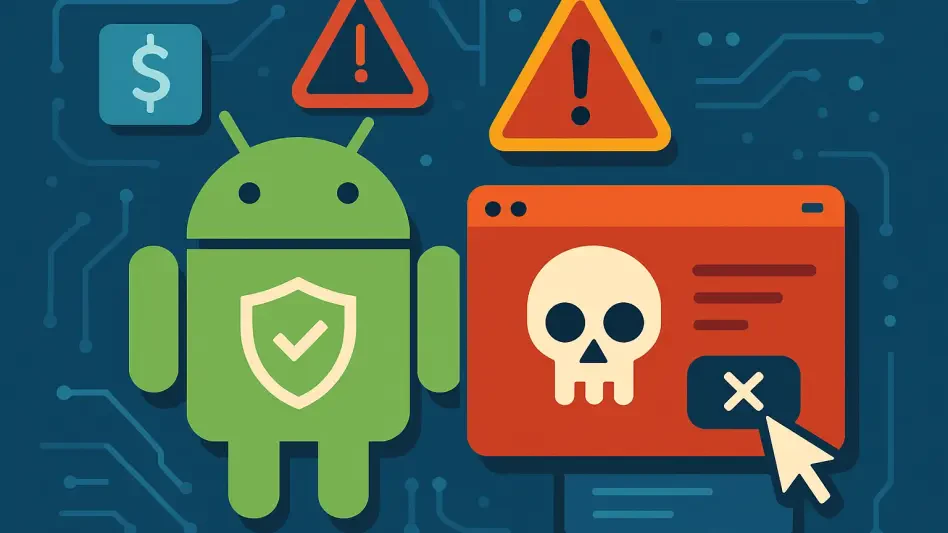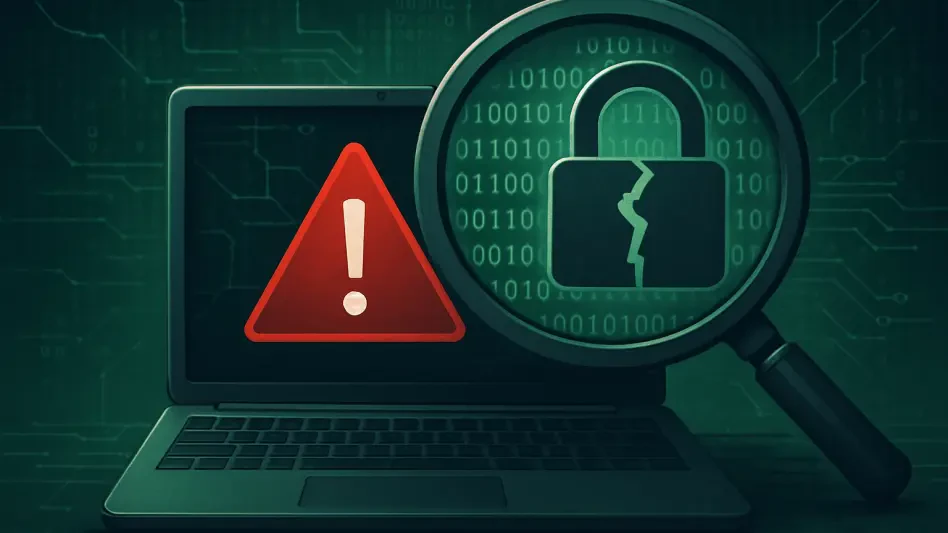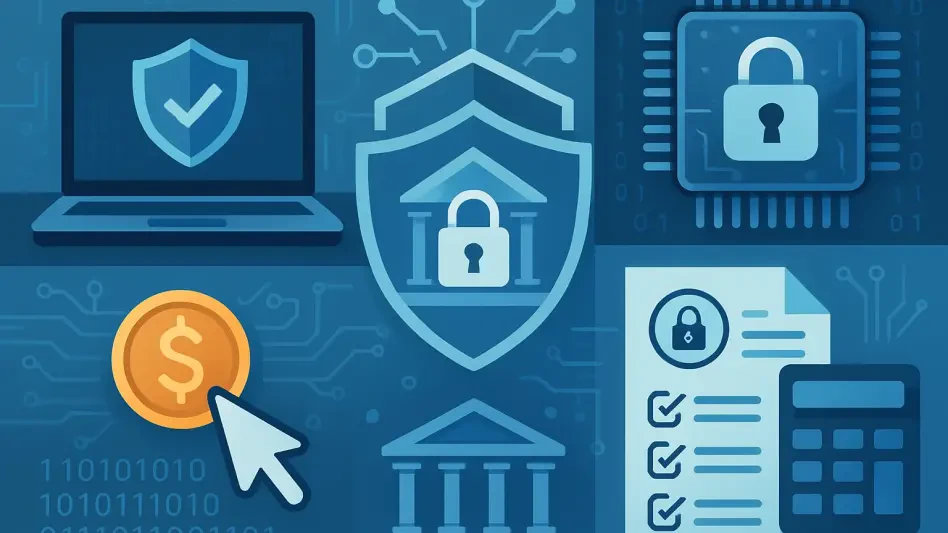The hospitality industry is under siege by a new phishing technique dubbed “ClickFix.” Leveraging impersonation and social engineering, cybercriminals behind this method, specifically the threat actor known as Storm-1865, have set their sights on popular travel site Booking.com. This novel form of cyber attack, which ingeniously masks itself as legitimate communication, poses significant risks to a sector already dealing with multiple cyber threats. This article explores the sophistication of the ClickFix technique, its implications, and possible countermeasures to combat these digital delinquents.
Understanding the ClickFix Technique
Anatomy of the Attack
Storm-1865 utilizes ClickFix by preying on the target’s desire to solve problems. Victims receive emails disguised as communications from Booking.com, instructing them to fix fabricated issues. These well-crafted prompts trick recipients into executing commands that result in malware downloads. Storm-1865’s innovative approach manipulates human psychology, exploiting a natural problem-solving inclination to navigate users toward a digital disaster. The emails often ask unwary victims to address purportedly urgent matters such as negative reviews, account verifications, or service requests, painting a veneer of urgency.
This technique involves embedding a link within the email that directs the recipient to a counterfeit verification page, designed to mimic Booking.com closely. The page employs tactics such as displaying a fake captcha, creating a false sense of security. The phishing strategy instructs the user to employ a keyboard shortcut to open the Windows Run window and paste a specific command already copied to the clipboard by the fake page. Following these instructions, unbeknownst to the target, leads to the installation of malware designed to steal financial data and sensitive credentials. Microsoft’s observations revealed multiple malware families linked to Storm-1865’s campaign, showcasing the threat’s adaptive nature.
Social Engineering at Its Best
The success of ClickFix hinges on its ability to appear legitimate. The phishing emails often contain fake captchas and call-to-action prompts, capitalizing on the user’s complacency and trust in a reputable brand. This thorough masquerade amplifies the likelihood of unwary individuals falling victim to the scam. One of ClickFix’s key elements is its psychological manipulation—leveraging the trust users place in well-known brands like Booking.com. By crafting emails that closely resemble genuine communication from trustworthy sources, the attackers increase their chances of successful phishing attempts.
These emails come wrapped in layers of authenticity, complete with branding, logos, and language that echoes genuine Booking.com correspondence. They also employ emotional triggers, such as urgency and fear of negative consequences, to pressure users into acting swiftly. By convincing targets that immediate action is required, Storm-1865 significantly raises the potential for malware installation. Notably, this spear-phishing technique is not just generic but tailored in many instances, increasing its plausibility and reducing the likelihood that recipients will question its authenticity. The fraud’s sophistication lies in its ability to blur the lines between genuine communication and malicious intent.
Impact on the Hospitality Industry
Widespread Campaign Footprint
Storm-1865’s campaign primarily targets the hospitality sector across various regions, including North America, Asia, and Europe. By adopting a broad targeting approach, the threat actor increases its chances of compromising valuable financial and credential data. The geographical spread of these attacks highlights ClickFix’s scale and potential for widespread damage, suggesting a strategic objective to cast a wide net and accumulate as much sensitive information as possible. Hotels and associated businesses, which often collect and store significant amounts of personal and financial data from guests, present an appealing target for cybercriminals.
The hospitality industry operates on trust, making it particularly vulnerable to phishing attacks masquerading as legitimate communication from reputable entities like Booking.com. This dependency on brand reputation and seamless communication amplifies the effectiveness of ClickFix campaigns. Furthermore, the cyclical nature of tourism and frequent changes in staff can create gaps in cybersecurity training, exposing businesses to increased risks. Microsoft’s findings confirm that the industry’s current cybersecurity measures need regular updates to effectively combat evolving threats like ClickFix. The evolving threat landscape demands a corresponding evolution in defense mechanisms to protect both businesses and their clientele.
Microsoft’s Observations
Microsoft’s analysis of the campaign reveals alarming details about the phishing method’s effectiveness and sophisticated nature. According to their insights, this approach manipulates the user’s problem-solving instincts and the perceived legitimacy of verification pages, making it highly deceptive. By incorporating elements that resonate with users’ daily experiences, such as captchas and common troubleshooting practices, ClickFix preys on the natural inclination to resolve issues quickly and efficiently, thereby enhancing its success rate.
Microsoft has identified multiple stages within ClickFix’s execution that collectively contribute to its efficacy. The initial phase involves spear-phishing emails that are carefully curated to bypass email security filters, ensuring they reach the intended targets. The subsequent phases include redirecting users to a counterfeit site and guiding them through a series of seemingly innocuous steps that culminate in malware installation. Microsoft’s findings underscore the importance of understanding these multi-stage attacks to develop more robust preventive strategies. The tech giant’s recommendation includes implementing behavioral analysis and machine learning models to detect and mitigate phishing attempts before they reach unsuspecting users.
How Stakeholders Are Responding
Booking.com’s Assurance
In response to the emerging threat, Booking.com has assured its users and partners that its systems remain secure. The company emphasizes it would never request sensitive information via email, underlining the importance of direct communication for any verifications. Booking.com also pointed out that its staff and partners receive continuous training to spot and handle phishing attempts effectively. They stress the significance of immediate reporting, urging anyone who encounters suspicious communication to notify their cybersecurity teams promptly.
The company has increased its investment in security infrastructure and threat monitoring to preemptively identify and neutralize attempts resembling ClickFix attacks. Booking.com continues to educate its user base on distinguishing legitimate correspondence from fraudulent communication. By fostering a culture of caution and verifying the authenticity of requests for personal or financial information, Booking.com aims to enhance the overall resilience of its network against phishing threats. Additionally, they reinforce that sensitive information such as payment details are never solicited via email, chat, text messages, or phone calls, emphasizing the need for trusted channels for such communications.
Expert Opinions
Security experts like Chet Wisniewski from Sophos warn about the dual-edged nature of ClickFix. While more tech-savvy users may quickly identify the scam, those with intermediate proficiency are most at risk. This highlights a crucial need for improved public awareness and education on recognizing phishing attempts. Wisniewski points out that user sophistication plays a critical role in the success rate of phishing campaigns, suggesting that security training tailored to various levels of technical proficiency is essential.
Experts recommend implementing multi-factor authentication (MFA) as an additional layer of security to mitigate damage from phishing attempts. MFA requires users to provide two or more verification factors to gain access to a system, making it considerably harder for attackers to succeed even if they manage to deceive a user into entering credentials. Wisniewski also advocates for timely software updates and patches, noting that out-of-date systems are particularly vulnerable to exploitation. The collective insights from experts emphasize that combating sophisticated phishing techniques like ClickFix necessitates a comprehensive approach, combining technological defenses with robust user education to create a resilient security posture.
Mitigating the Risk
Proactive Measures
To effectively combat ClickFix and similar threats, a multi-pronged approach is essential. Organizations must adopt stringent security protocols, continuous monitoring, and user education. Teaching individuals to recognize phishing signs and understanding verification practices are vital. Proactive measures include regular security training sessions for employees to help them differentiate between legitimate and malicious emails. Companies might also leverage simulation tools that mimic phishing attacks to educate their workforce without real-world consequences, thereby enhancing their preparedness.
Organizations should deploy advanced threat detection systems capable of identifying and mitigating phishing attempts in real-time. These systems use machine learning algorithms and behavioral analysis to detect anomalies and flag potential threats, minimizing the window of opportunity for cyber attackers. Additionally, establishing clear protocols for verifying the authenticity of communications, such as using separate trusted channels for sensitive information requests, can significantly reduce the likelihood of falling victim to phishing schemes. Investment in cybersecurity tools and platforms that offer comprehensive protection, combined with a well-informed user base, forms the bulwark against threats like ClickFix.
Role of System Administrators
System administrators play a crucial role in mitigating damage from phishing attacks. Restricting administrative rights and ensuring that only necessary personnel have access to critical systems can significantly reduce the potential impact of malware downloads initiated by phishing schemes. Admins should enforce the principle of least privilege, ensuring users only have the minimal level of access they need to perform their duties. This practice helps contain potential breaches and prevents malware from gaining extensive control over networked systems.
Additionally, maintaining an inventory of hardware and software assets helps in identifying and addressing vulnerabilities promptly. System administrators should also deploy and regularly update endpoint detection and response (EDR) tools to monitor for suspicious activity across devices, ensuring swift action in case of any anomalies. Regular audits and penetration testing can further strengthen system defenses by uncovering and rectifying potential gaps before they can be exploited by attackers. Through vigilant oversight and strategic access management, system administrators can buttress the organization’s defense mechanisms, thwarting the efforts of threat actors like Storm-1865.
Toward Effective Mitigation
Addressing the ClickFix threat necessitates a multi-faceted approach that combines user education, rigorous security protocols, and continuous monitoring. Users must be adept at identifying phishing signs and understanding verification practices. Equally, organizations need robust security infrastructures that preemptively identify and nullify these threats before they reach end-users.
Conclusion
The hospitality sector is currently grappling with a new phishing technique called “ClickFix.” Cybercriminals behind this method, particularly a threat actor known as Storm-1865, are targeting popular travel site Booking.com. This technique utilizes impersonation and social engineering to appear as legitimate communication, posing severe risks to an industry already besieged by various cyber threats. ClickFix represents a significant step forward in cyber attack methods, employing tactics that deceive users into revealing sensitive information. The article delves into the complexity of the ClickFix strategy, its implications for the hospitality industry, and potential countermeasures to fend off these cybercriminals. The sophisticated nature of this attack makes it especially challenging to detect and prevent, raising the stakes for cybersecurity measures. Understanding and responding to ClickFix is crucial for protecting both businesses and consumers in the travel and hospitality domains. The article provides insights into possible defenses that can be implemented to safeguard against such advanced digital threats.







